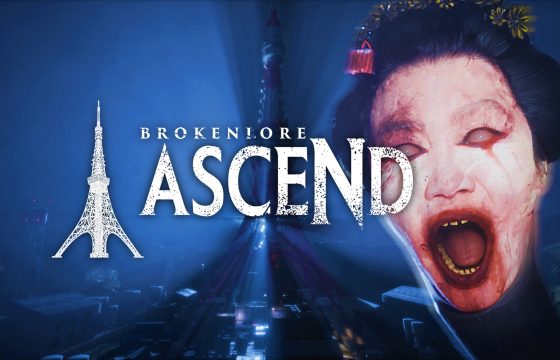The End of the Gaming Industry’s Greatest Illusion
The major players in the gaming industry have always sought the perfect solution to minimize investments and maximize profits as quickly as possible. Many have sought every possible shortcut, such as banking on big names and creating poor-quality products to achieve as many sales as possible, like tie-ins dedicated to movies in the late 80s, such as the case of E.T, currently buried in the desert, continuing until 2010, progressively worsening the situation.
Another successful strategy has been to re-release the same title with few changes every year, focusing more on microtransactions than on stability. Examples include various FIFA or sports games that, targeting a less informed and more susceptible audience, can exploit many anti-consumer moves and achieve high economic results.
The turning point was created by EPIC, launching the greatest illusion ever created, and Fortnite with its predatory and insidious system has generated huge profits. For years, this title and its business model blinded and made many competing companies dream, which in the following years studied ever new ways to exploit this seemingly simple system, but which hides endless pitfalls not always detectable at the beginning of the journey.

Why Fortnite Became the Most Followed Example by Companies and is Now Approaching its End
After the transition from Cliff Bleszinski to Tim Sweeney, Epic underwent many changes, not all positive, such as the abandonment of the Unreal Tournament series and the creation of a new tower defense title, Fortnite.
Initially, Fortnite was a very simple title, and its “Save the World” tower defense mode had limited success. Tim Sweeney’s insight was to replicate the Battle Royale mode, inspired by the recent success of Player Unknown Battlegrounds, with some modifications such as the addition of building mechanics, and making it free-to-play.
This move turned out to be hugely successful. By incorporating a microtransaction system offering increasingly diverse items and new skins every season, profits soared, largely thanks to its predominantly young audience. Over the years, the success only increased.
However, one crucial aspect to consider is the type of audience these games attract: an extremely impressionable and often toxic one. Epic has accustomed players to increasingly exciting and ambitious events over the years, often featuring big-name guests. Recently, the frequency and scale of these events and content updates have only increased.
The risk now is that if, for a period of time, the content decreases in quality or fails to meet player expectations, the whole structure may start to crumble slowly. The years of Epic’s dominance in the gaming industry are many, and the fatigue factor is starting to be felt. Epic is teetering on the edge, with one wrong step potentially leading to its downfall.

Elements to Consider in a Live Service
Every Live Service is a very dangerous gamble. If not well planned, it can lead to significant financial and time losses, as seen in cases like The Last of Us factions and various Live Services canceled or shut down shortly after launch by Sony and Ubisoft. Achieving success in this market is increasingly difficult, and once obtained, it must be tightly maintained. There are fundamental elements common to Live Services:
- Entry modes: Most are free-to-play, especially for smartphones; the most important ones on consoles, like the recent Helldivers 2 or Diablo 4, are paid.
- Always online: A Live Service will always be online, and only a few have offline modes. This element brings two fundamental problems: over time, the audience will decrease, and servers will eventually shut down, rendering the game unplayable. Launching an always-online title cuts off a significant portion of the audience that doesn’t accept this type of game due to the requirement for mandatory online play.
- Constantly create new content: If a studio creates a Live Service, it must be prepared to dedicate itself entirely to it, consistently delivering new content to players who will always demand more. Good examples of content management are Helldivers 2 and Final Fantasy XIV.
- Create compelling gameplay with good grip: Gameplay polish is CRUCIAL for a good Live Service. An online title should aim to make the player as passionate as possible about its gameplay mechanics. Diablo 4 is a good example of excellent gameplay. The grip of the entire experience is essential to keep players hooked.
- High maintenance costs: Every company venturing into developing a Live Service must be aware of how expensive it is to keep servers online and operational. Therefore, profits must be high at all costs.

Why Live Services are No Longer Sustainable at this Moment in History
In the current period, with development costs continually rising, it’s very risky to embark on such a long-term project without a clear end in sight. A project of this nature is potentially unsustainable for an extended period without a constant source of income.
Naughty Dog‘s decision to abandon Factions in favor of classic single-player experiences was an extremely intelligent choice that demonstrates the studio’s clear vision.
Companies like Sony have heavily invested in Live Services, but with poor results, revealing a weakness not typical of Sony.
During its period of confusion, Ubisoft attempted to follow the “trend” of Live Services, but also with dismal results.

What Will be the Future of the Gaming Industry?
At the moment, the industry is stagnant, and only high-quality productions that shake up the sector can save it.
Live Services and always-online games have represented a phase of this industry and are not destined to endure. Conversely, courageous productions in the independent market such as Baldur’s Gate 3, Squadron 42, and various author-driven projects like Alan Wake 2, Death Stranding 2, and the upcoming Hellblade 2 have the power to overturn the situation and save the sector from dangerous stagnation.
If you Think your Game is Eternal,
Remember,
Only Doom is Eternal!









